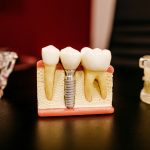
Antiresorptive medication, used to deal with osteoporosis and metastatic bone illness, can complicate dental implant procedures by rising the chance of medication-related osteonecrosis of the jaw (MRONJ). This systematic evaluate investigates how these medication have an effect on the success and problems related to osseointegrated dental implants.
Key findings
- Antiresorptive medication considerably enhance the chance of (MRONJ), accounting for 83% of implant failures.
- Most MRONJ circumstances occurred within the posterior mandible.
- The common time from beginning antiresorptive drug remedy to being recognized with MRONJ was roughly 34 months.
- Efficient remedy of MRONJ can protect implants, with 27% of affected implants salvaged and 75% of MRONJ websites reaching full therapeutic.
Goal
To judge the results of antiresorptive medication on osseointegrated dental implants, together with the traits of MRONJ, and supply evidence-based pointers for dental practitioners.
Strategies
- The research protocol was not registered. Nevertheless, the authors used PRISMA pointers for the reiew reporting.
- The database search included PubMed and EMBASE, utilizing key phrases associated to “dental implants,” “antiresorptive medication,” “bisphosphonates” and “denosumab” as much as October 16, 2023. Handbook searches had been carried out in key maxillofacial journals from 2011 to 2023. Reference lists of related articles had been additionally reviewed to determine further research.
- Eligible research had been these involving medical trials or case collection with at the very least 5 dental implants in people, detailing antiresorptive drug use and documented implant outcomes.
- Knowledge had been extracted utilizing a standardised type, capturing creator particulars, publication yr, research design, pattern dimension, demographics, sort and route of antiresorptive drug administration, implant particulars, and outcomes.
- Research had been assessed for high quality utilizing a non-formal high quality evaluation software.
- Attributable to anticipated heterogeneity, a meta-analysis was not carried out.
- A story synthesis of the findings was performed, with outcomes organised thematically and descriptively summarised.
- Subgroup analyses primarily based on participant traits had been deliberate.
Outcomes
Description of Included Research
- The evaluate included a complete of eight research, seven case collection and one retrospective cohort research. No randomised managed trials had been recognized.
- The eight included research had a complete of 135 sufferers and 445 dental implants.
Predominant Findings
- Implant Success and Failure Charges:
- Out of 445 implants, 23% (101/445) failed after the initiation of antiresorptive drug remedy.
- Failures Attributed to MRONJ:
- 83% (76/92) of implant failures had been as a result of MRONJ.
- The remaining 17% (16/92) of failures had been attributed to different causes, reminiscent of peri-implantitis.
- Time to MRONJ Improvement:
- The imply time from the initiation of antiresorptive medication to the analysis of MRONJ was 34 months, with a spread from 3 months to 16 years.
- Antiresorptive Drug Particulars:
- 66 sufferers obtained bisphosphonates, and 9 sufferers obtained denosumab.
- Of these handled, 61% (54/89) took oral antiresorptive medication, whereas 39% (35/89) obtained them through intravenous or subcutaneous administration.
- Location and Severity of MRONJ:
- Of the 31 implant failures as a result of MRONJ with particular location information, 65% (20/31) occurred within the mandible, and 85% (17/20) of those had been within the posterior area.
- Relating to the severity, 10 circumstances had been labeled as Stage 2 MRONJ, and 1 case was Stage 3 MRONJ.
- Remedy Outcomes:
- 27% (21/76) of implants affected by MRONJ could possibly be preserved following remedy.
- 75% of MRONJ websites confirmed full mucosal therapeutic after remedy, whereas the remaining websites had been secure with substantial mucosal protection.
Examine quotation:
Feedback:
The systematic evaluate presents helpful insights into the results of antiresorptive medication on osseointegrated dental implants, notably highlighting the chance of MRONJ. Nevertheless, there are some methodological shortcomings to think about:
- The evaluate’s protocol was not registered, which might elevate considerations in regards to the transparency and pre-planning of the analysis course of.
- Only some databases had been searched, probably omitting related research that would enrich the findings.
- The absence of a standardised vital appraisal software to evaluate research high quality may undermine the robustness of the conclusions drawn.
Picture credit score
Picture by Jonathan Borba on Unsplash


